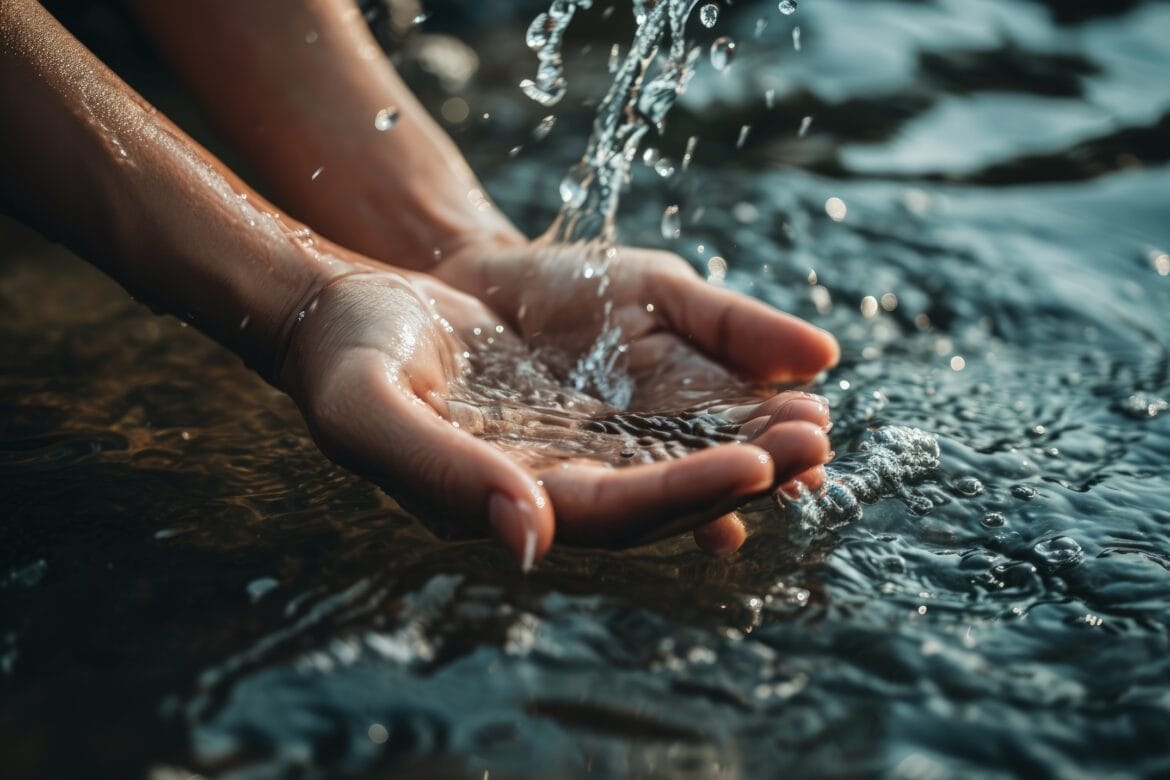This month, a new UN report found that 2023 was the driest year for global rivers in more than three decades, underlining a significant shift in water availability amid the rapidly escalating climate crisis. The report also echoes the recent findings from UNEP’s Mid-term Status on SDG 6 Indicators, which found that SDG 6—clean water and sanitation for all—is “alarmingly off-track.”
Against a backdrop of soaring temperatures, the recent World Meteorological Organization’s (WMO) State of World Water Resources report outlines that the past five years have recorded widespread below-normal conditions for river flows, with reservoir inflows following a similar pattern.
Indeed, 2023 was the hottest year on record, resulting in extended droughts and extreme weather events caused by the human-induced climate crisis and El Niño impacts.
This places further strain on existing water resources, with lower water availability for communities, agriculture and ecosystems.
Already, just 0.5 per cent of the water on Earth is deemed useable and available freshwater, and according to the WMO, over the last two decades, terrestrial water storage has been declining at a rate of 1 cm per year, with significant implications for water security.
Last week, in a statement, the WMO Secretary-General Celeste Saulo called water the “canary in the coalmine of climate change” and warned that we receive distress signals in the form of increasingly extreme rainfall, floods and droughts, which wreak a heavy toll on lives, ecosystems and economies.
Already, some 3.6 billion people lack access to water for at least one month a year, and that number is expected to rise to more than 5 billion by 2050, according to UN-Water.
The Escalating Crisis in the Arab Region
As the world grapples with this emerging crisis, the Arab region is already on the frontlines, and the numbers are alarming.
Last year, at the UN Water Conference in New York, Rola Dashti, Executive Secretary of the Economic and Social Commission for Western Asia (ESCWA), confirmed that nearly 50 million people in the Arab region lack access to basic drinking water, while nearly 90 per cent of the total population faces water scarcity, and warned that the region is not on track to reach SDG 6.
Here, Dashti underlined the importance of water diplomacy between countries, with cross-border, sector- and stakeholder-based water cooperation.
Water Scarcity Solutions
In search of solutions, last year, the World Bank launched a report to examine what can be done on an institutional level in the MENA amid unprecedented water scarcity.
Indeed, it outlined that by 2030, the amount of water available per capita in the region will fall below the absolute water scarcity threshold of 500 cubic meters per person. Meanwhile, by 2050, an additional 25 billion cubic meters of water will be needed annually—this is roughly equivalent to establishing 65 desalination plants, the size of Saudi Arabia’s Ras Al-Khair plant, the largest in the world.
The report proposes a series of recommendations for better water management to ease pressures, including reallocating water to higher-value uses, increasing water service tariffs, and reducing waste. Indeed, UN figures show that in the US alone, household water leaks waste nearly a trillion gallons of water annually.
The report warns that without institutional reforms, the region will remain in water distress even with increased funding for water infrastructure.
However, there is immense opportunity for innovation here, including with regard to the re-exploitation of non-conventional water resources, such as wastewater treatment and reuse, rainwater harvesting, and desalination of brackish water.
More broadly, the UNEP recently underlined the role of food systems transformation in relieving pressures on water resources, including shifting to more efficient water use in agriculture—which, at present, consumes around 70 per cent of total freshwater use globally.
In a similar vein, the report encouraged the shift to plant-based diets, with plant-based foods requiring significantly less water in production than animal-based products. For context, just one kilogram of beef requires 15,000 litres of water.
The Private Sector Plays a Major Role in Investment
However, this kind of innovation at scale requires funding, and the current gap is significant—multiplied by projected real GDP losses ranging from 1.1 to 6.6 per cent by mid-century in some MENA countries, of which water scarcity is a key driver. Already, inadequate water supply and sanitation cost the region around $21 billion annually in economic losses, according to a 2017 World Bank report.
Against this backdrop, the private sector can play a key role in closing the funding gap through investment and the development of new technologies for water recycling, and purification, as well as intelligent water management.
Regionally, in the Middle East, a number of projects have zoned in on innovation in water, notably a first-of-its-kind selective desalination plant powered by 100 per cent renewable energy in Oxagon, NEOM, Saudi Arabia. Other emerging desalination innovations include energy-saving technologies and technologies that address desalination brine.
For example, in a recent interview with ESG Mena, Ramiz Parbalkar, Head of Division – Water Technology at EEIC, explained how MediSun WEGen technology tackles reject water.
“The brine can be managed using the WEGen model, and it can be recirculated back to the feed of the RO. There is a circular movement of the water from the reject back to the feed,” said Parbalkar, explaining the process.
In parallel with private sector technologies, initiatives, and projects, international institutions and civil society organisations are also taking action.
In 2023, ESCWA launched the Arab Initiative to Mobilise Climate Finance for Water by engaging a group of stakeholders in Arab countries to cooperate in implementing cross-border water-related projects. Partners in the initiative included the League of Arab States, the Islamic Development Bank, the FAO, and the Green Climate Fund.
Similarly, the Blue Peace Initiative was launched in the Middle East in 2022 as a regional non-governmental initiative that aims to strengthen cross-border water cooperation, working to improve water, food and energy security in the region and preserve ecosystems in the face of the climate crisis.
That said, while advancements are being made, progress is not keeping up with the intensifying crisis and widening financing gap for climate change mitigation and adaptation projects. Something underlined by the WMO Secretary-General last week.
“We are not taking the necessary urgent action,” said Saulo in a statement.
Looking ahead to the UN climate conference, the COP29 Presidency has said that water shortages will be a top agenda item.
By Hadeer Elhadary, Lead Journalist, ESG Mena – Arabic. Edited by Madaline Dunn.




